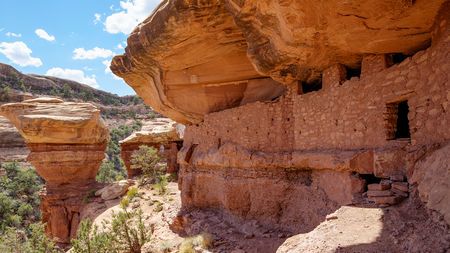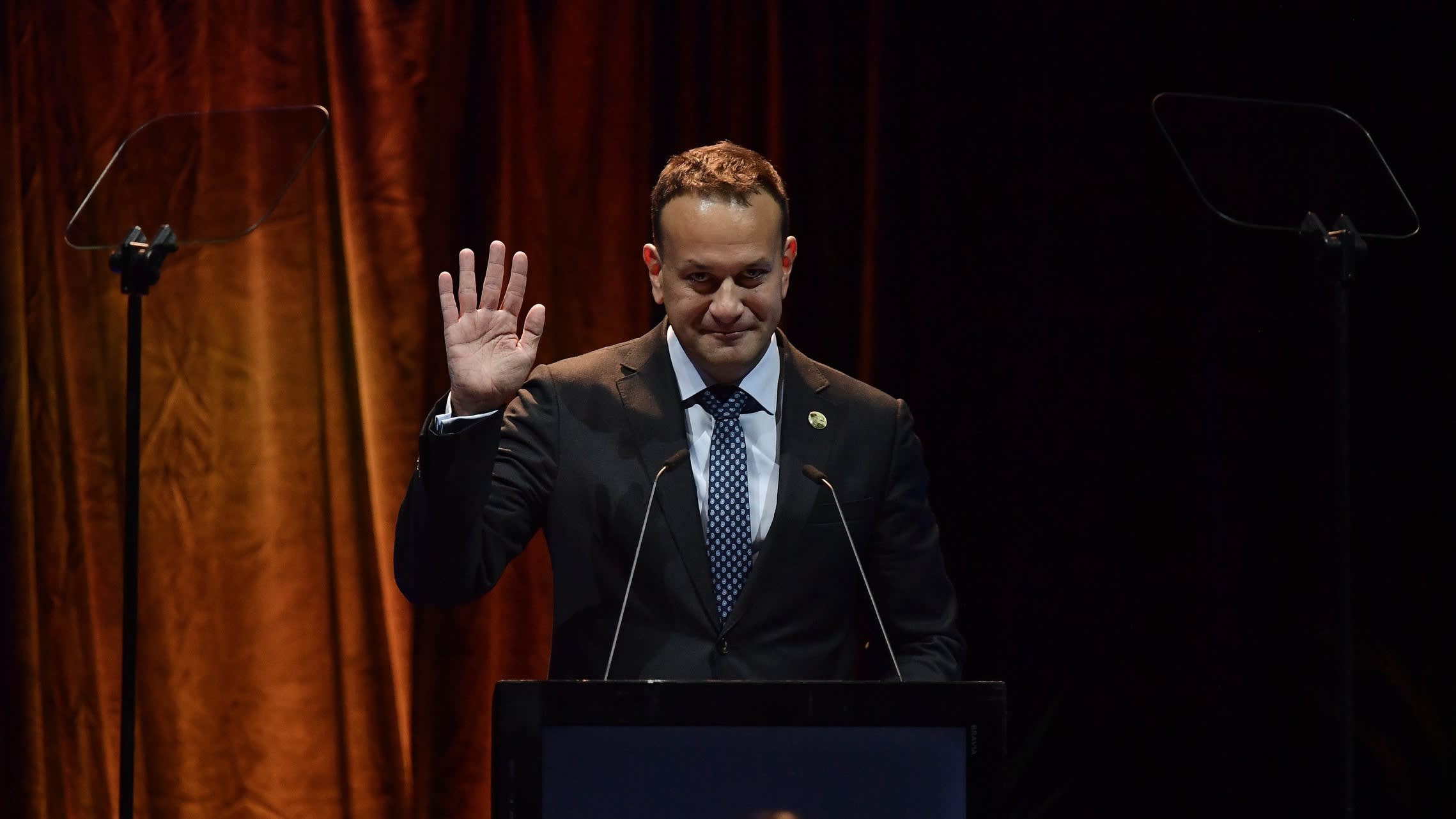
A portion of the Bears Ears National Monument in Utah
Bob Wick/Bureau of Land Management
When paleontologist Rob Gay returned to his research sites at the Bears Ears National Monument last month after a long absence, he wasn’t sure what he would find. Former President Donald Trump had shrunk the monument, created by former President Barack Obama, by 85% and weakened protections for sites holding fossils and cultural artifacts. Gay spotted new off-road vehicle tracks in the vermillion-hued soil. But thankfully, he says, his sites had not been damaged.
Gay is just one of many researchers and Native American officials urging President Joe Biden to reverse Trump’s downsizing of Bear Ears—and even expand it. Doing so would not only restore stricter protections for numerous sites, but also free up federal funding for surveys, research, and preservation efforts. But although the Biden administration has hinted that it will reverse Trump’s order—and the decision could come soon—it faces some tricky decisions that could shape the political and policy landscape for monuments for years to come.
“There are still some very thorny legal questions,” says paleontologist David Polly of the University of Indiana, Bloomington, who is spearheading a push by the Society of Vertebrate Paleontology (SVP) to reinstate the previous boundaries of Bears Ears, as well as restore lands that Trump removed from the Grand Staircase-Escalante National Monument. If Biden simply reverses Trump’s actions, for example, it could bolster Trump’s claim—now being challenged in court—that presidents have unfettered legal authority to drastically alter monuments created by previous presidents.
Obama created the Bears Ears monument in 2016 using the Antiquities Act of 1906, which allows presidents to protect “objects of historic and scientific interest” without congressional approval (unlike national parks and marine sanctuaries, which require legislation). Native American tribes and monument advocates had asked Obama to place nearly 7700 square kilometers of federal land, including areas known for their fossils of dinosaurs and other organisms, within the monument. Obama ultimately opted to protect about 5500 square kilometers, in part because of opposition from state officials, industry groups, and Republicans in Congress. They argued that blocking development of coal, oil and gas, and other resources within the monument would harm the region’s economy.
In 2017, those groups persuaded Trump to reduce the size of Bears Ears to about 800 square kilometers; he also divided the monument into two parts. Trump also shrank Grand Staircase-Escalante, created by then-President Bill Clinton in 1996, by nearly half, to about 7600 square kilometers. The moves not only left sites of interest to scientists outside the new boundaries, but also meant researchers could no longer tap federal funding aimed at supporting research on monument resources, forcing them to abandon some planned fieldwork.
Tribes with a strong ancestral connection to Bears Ears, along with SVP and environmental groups, promptly filed lawsuits seeking to reverse the decisions, arguing that Trump overstepped his authority under the Antiquities Act. Four of those challenges are now pending before a federal judge in Washington, D.C.
The Trump administration made little effort to consult with paleontologists and other researchers when it shrank the monuments, says paleontologist Adam Huttenlocker of the University of Southern California, who has research sites both inside and outside the new boundaries of Bears Ears. “Some of the most fossiliferous areas were neglected and are no longer considered part of the monument,” he says. Those sites could provide “unique insights into several important paleontological intervals,” including the rise of dinosaurs at the end of the Triassic, researchers concluded last year in a review of paleontological research conducted within the monument.
Now, Huttenlocker is hoping Biden will restore monument protections to “scientifically valuable sites,” such as fossil-rich strata in the Valley of the Gods and Indian Creek. Native American groups, SVP, and Gay are pushing the administration to go a step further and expand the monument. Of special interest to Gay and SVP is a long finger of land that stretches southwest to Lake Powell, on the Utah-Arizona border, that was part of the original proposal to Obama. “This is an area rich in known paleontological sites with little in the way of formal publication,” Gay says. “We have a lot of fossils in the ground we need to get out, and there’s a lot of ground we haven’t walked over.”
Researchers also want the Biden administration to take a hard look at revising a management plan issued by the Trump administration last year. It allows mining, drilling, and expanded recreational access, including off-road use in sensitive areas that were previously off-limits.
Biden has already asked the Department of the Interior to study such changes, as part of a review of Trump’s monument decisions. And new Interior Secretary Debra Haaland, whom the Senate on Monday confirmed as the first Native American to head the department, announced this week she will travel to Utah in April to meet with tribes and elected officials on the issue. Haaland, who said she will incorporate their input into the Interior Department’s review before submitting it to the White House, has suggested she would support restoring the monuments.
But there’s uncertainty around how it should be done. The fastest fix, observers say, would be for Biden to simply invoke the Antiquities Act once again to reverse Trump’s proclamations. But that would still leave the monuments vulnerable to the whims of future presidents. It might be better, they say, for the administration to let the lawsuits proceed and see what the courts say, in hopes of a favorable ruling that would prohibit the kind of move Trump made.
But that’s a risky proposition, Polly says. “There are questions about whether it’s better to keep [the lawsuits] active, or for [them] to disappear,” he says. Last week, a federal district court judge granted the Biden administration a stay on the litigation while it mulls its options.
There are also political considerations. Restoring Bears Ears would likely enrage many Republican lawmakers from western states and, if Republicans regain control of Congress in the 2022 elections, they could press for legislative changes to the Antiquities Act. Some lawmakers from Utah, meanwhile, have asked the White House to work with Congress to bring together the various parties with an interest in the monuments, with a goal of passing federal legislation that would provide a permanent remedy to the monument boundary tug of war.







